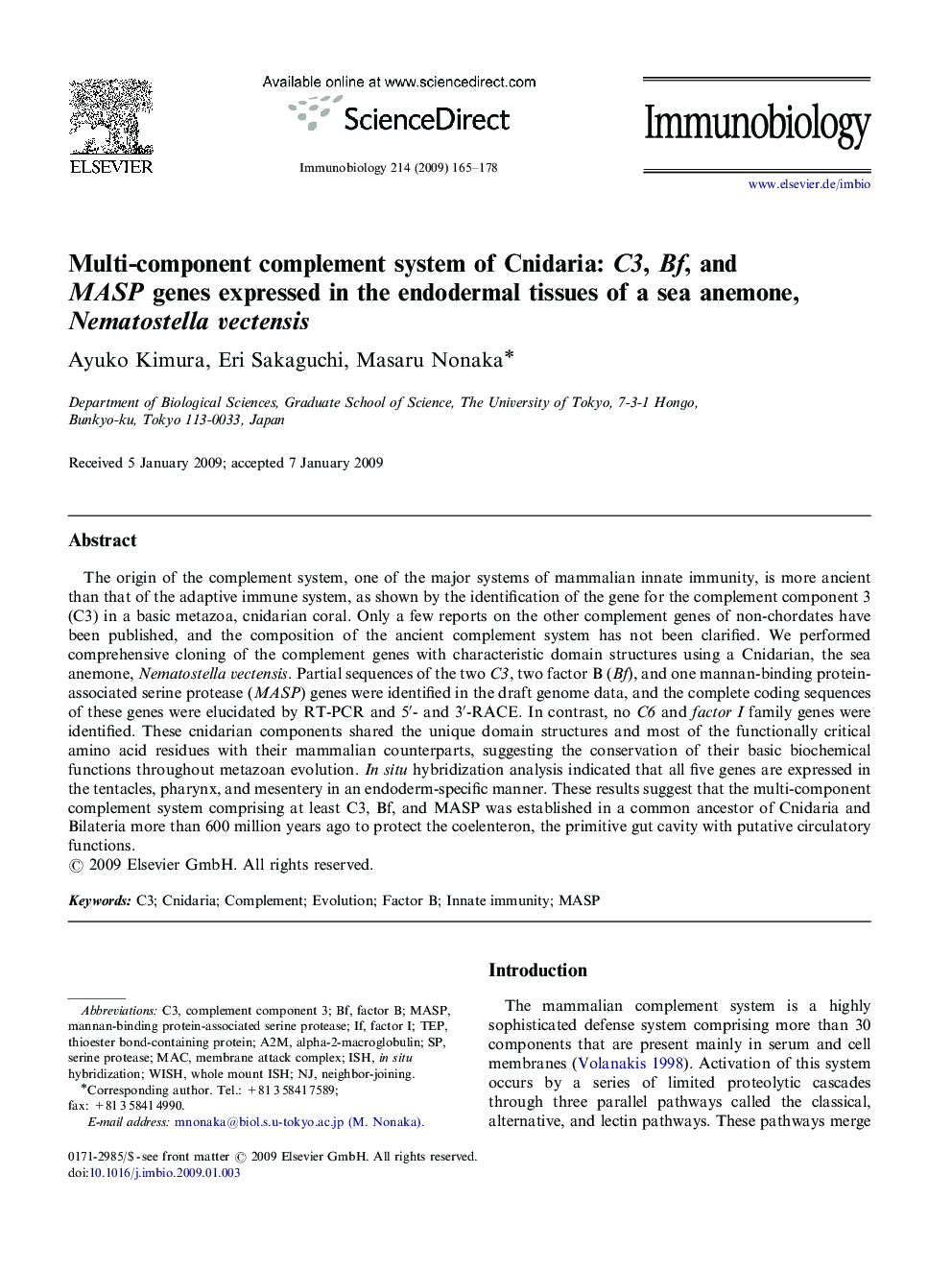| Article ID | Journal | Published Year | Pages | File Type |
|---|---|---|---|---|
| 2183874 | Immunobiology | 2009 | 14 Pages |
The origin of the complement system, one of the major systems of mammalian innate immunity, is more ancient than that of the adaptive immune system, as shown by the identification of the gene for the complement component 3 (C3) in a basic metazoa, cnidarian coral. Only a few reports on the other complement genes of non-chordates have been published, and the composition of the ancient complement system has not been clarified. We performed comprehensive cloning of the complement genes with characteristic domain structures using a Cnidarian, the sea anemone, Nematostella vectensis. Partial sequences of the two C3, two factor B (Bf), and one mannan-binding protein-associated serine protease (MASP) genes were identified in the draft genome data, and the complete coding sequences of these genes were elucidated by RT-PCR and 5′- and 3′-RACE. In contrast, no C6 and factor I family genes were identified. These cnidarian components shared the unique domain structures and most of the functionally critical amino acid residues with their mammalian counterparts, suggesting the conservation of their basic biochemical functions throughout metazoan evolution. In situ hybridization analysis indicated that all five genes are expressed in the tentacles, pharynx, and mesentery in an endoderm-specific manner. These results suggest that the multi-component complement system comprising at least C3, Bf, and MASP was established in a common ancestor of Cnidaria and Bilateria more than 600 million years ago to protect the coelenteron, the primitive gut cavity with putative circulatory functions.
